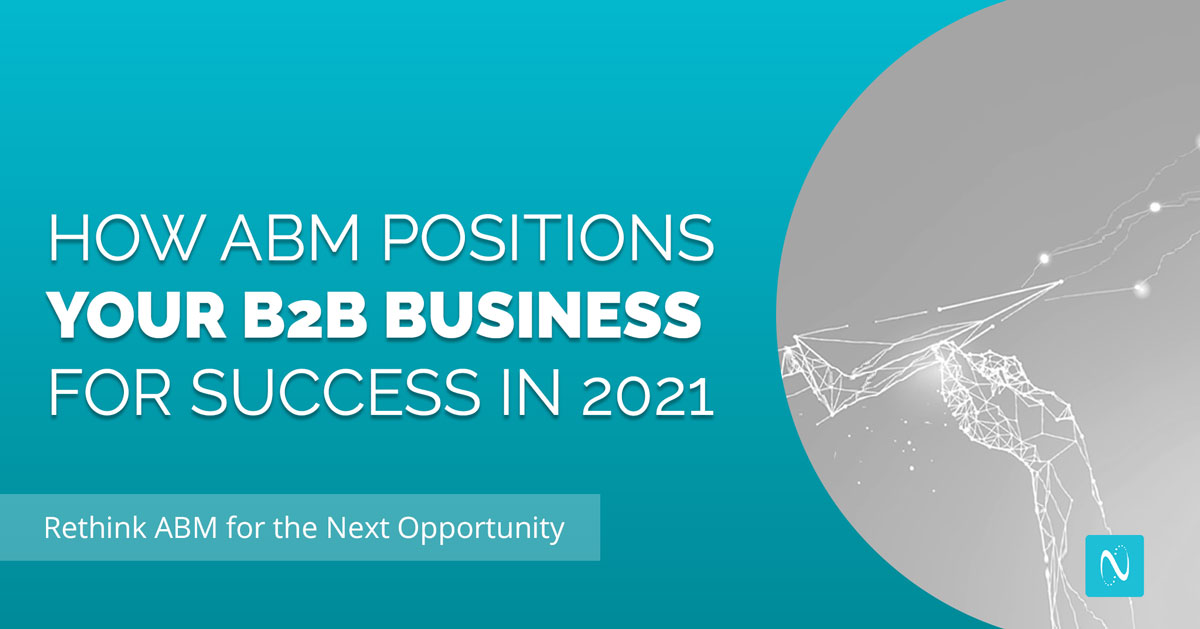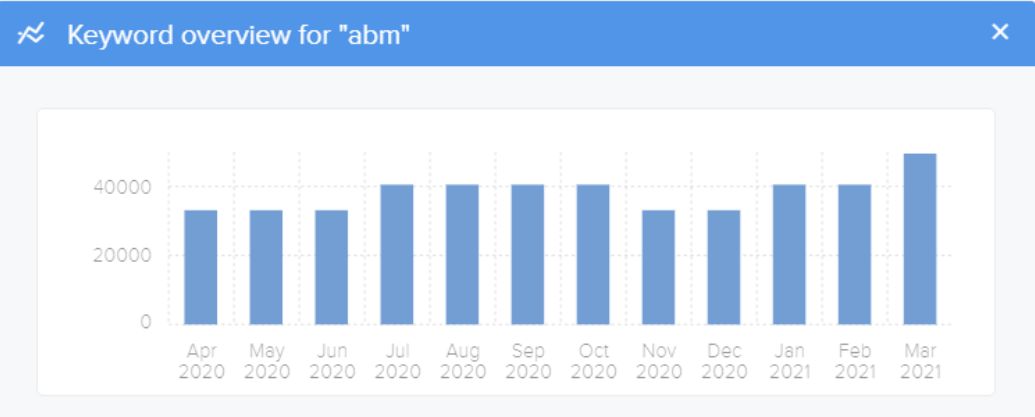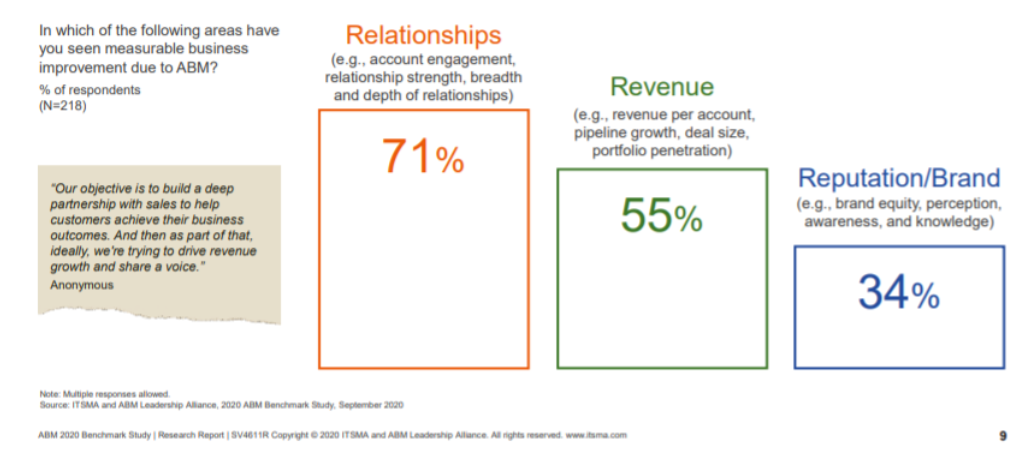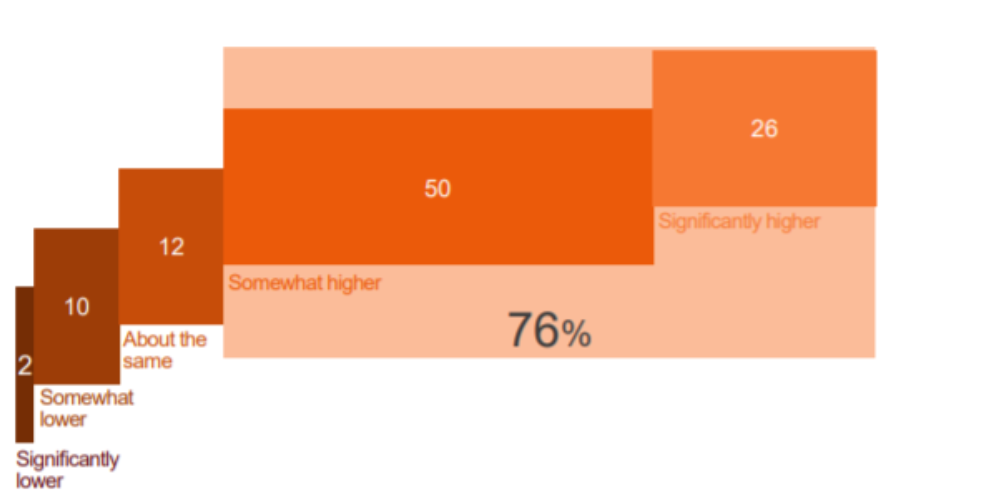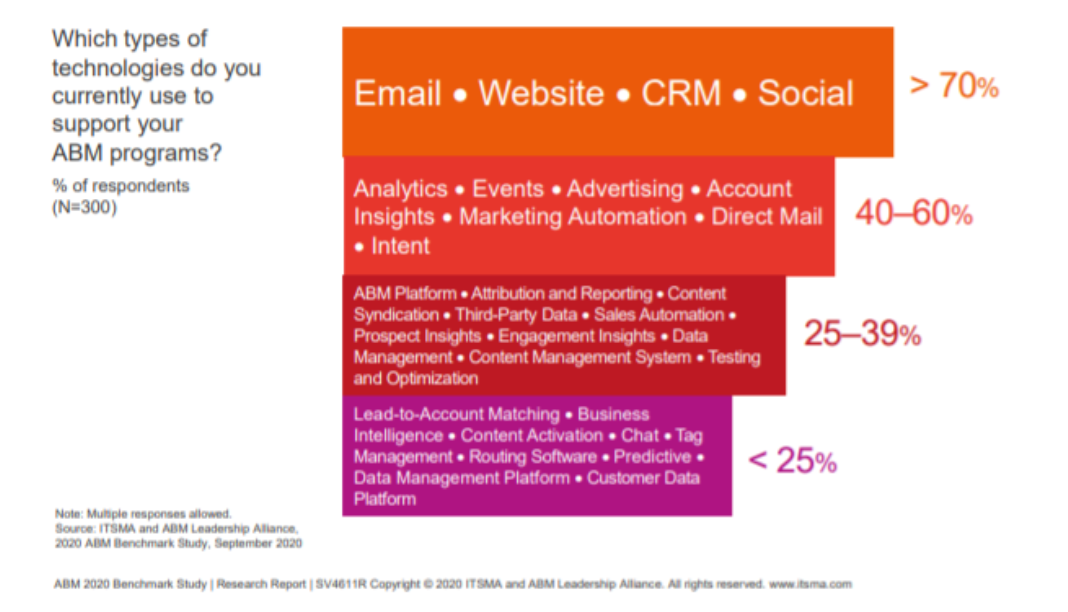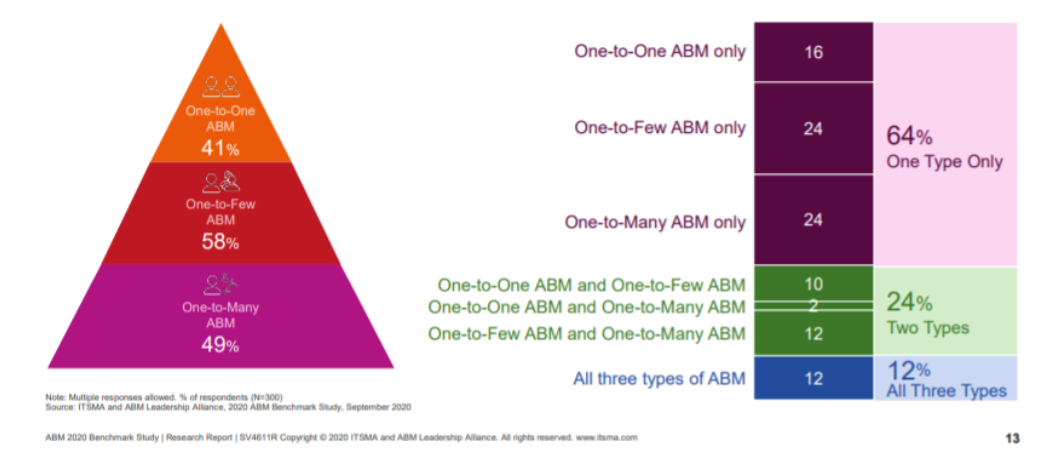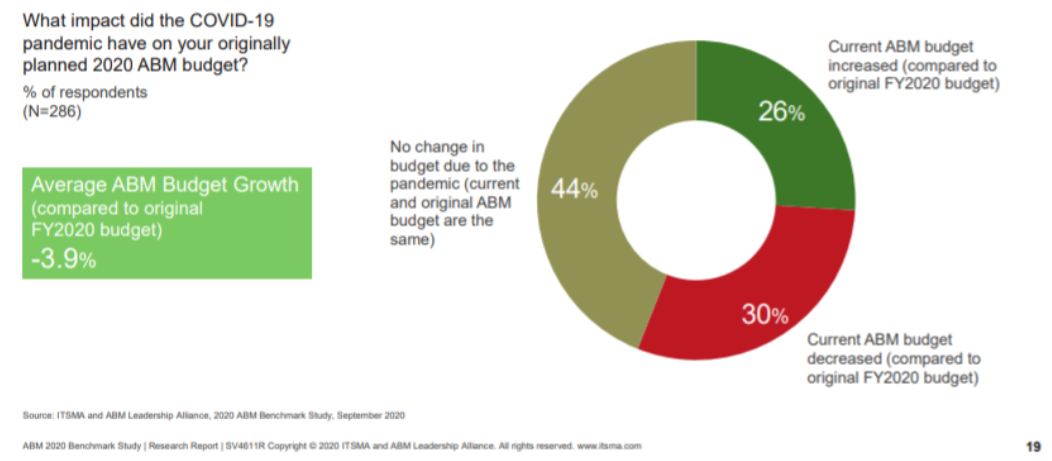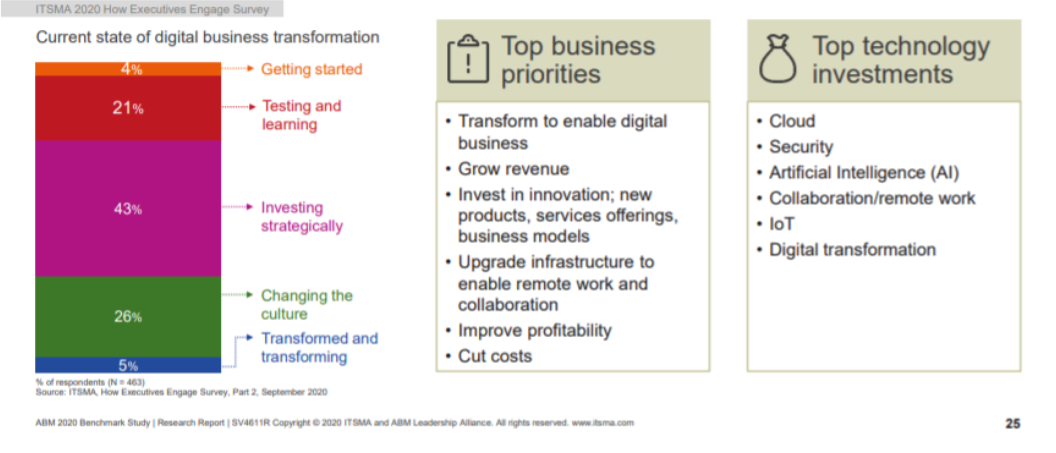In the past year, ABM has become one of the hottest topics in all of B2B Digital Marketing. Wordtracker gives us a peek into how much more popular the term has become, with nearly 50,000 individual searches for “abm” in March 2021.
So why is ABM so popular? Well, mostly because it delivers.
As a quick refresher, ABM (Account-Based Marketing) is a B2B marketing and sales strategy that identifies key accounts to create and/or expand a business relationship. Account-based marketing also allows organizations to better align Sales and Marketing teams on one target.
Amid the laundry list of disruptions 2020 threw at us, Account-Based Marketing (ABM) continued to gain traction as a core B2B marketing strategy that delivers substantial business results.
If you’re currently asking yourself how your business can use ABM to drive success, worry not, friend, we’ve got something special for you.
Rethinking ABM for the Next Opportunity
In the 4th annual ABM benchmark study from ITSMA and the ABM Leadership Alliance titled Rethinking ABM for the Next Opportunity, authors Rob Leavitt, Senior Vice President, Consulting and Julie Schwartz, Senior Vice President, Research and Thought Leadership, ITSMA highlight how ABM continues to deliver consistent success during a time of unparalleled challenges and change.
Before we encourage you to read the entire report, let’s take a look at some of the pieces ITSMA and the ABM Leadership Alliance focused on.
ABM’s Continued Impact on The 3 R’s
ABM programs continue to generate substantial business results across the three R’s of marketing impact: Reputation, Relationships, and Revenue.
Beyond the awesome boosts in relationships and reputation, the majority of companies currently running ABM programs are seeing tangible improvement in their revenues thanks to targeted relationship development. As you can see in the graph below, most companies are also reporting higher ROI with ABM than with other types of marketing, with 50% saying it delivers a greater return compared to traditional marketing efforts, while 26% say they see significantly higher results.
Mature Tech Stacks = Maturing Results
While ABM is growing in popularity, most companies are still getting a sense of what works for them when it comes to technology. Leveraging specialized tools to support their programs requires a good deal of trial and error, with many companies in the early stages of their ABM programs relying largely on core tools and systems including email, web, CRM, and social media. Comparatively, only a small number of businesses have developed a mature tech stack.
What the research also shows is that the more mature ABM programs are not only the most technologically advanced, they’re also strategically diverse. Less than a quarter of respondents said their ABM programs leveraged more than one ABM approach. As the report shares, the more mature programs leveraging multiple types of ABM are the ones driving the most success.
With this in mind, it’s no surprise that the top planned investments for 2021 include upgrades to existing ABM platforms, focused spending on attribution and reporting, buyer intent, content syndication, and events.
How COVID-19 Impacted ABM Budgets
COVID-19 certainly impacted every business and every industry. While nearly ⅓ of ABM programs saw their budgets reduced, 70% of companies saw their resources largely stay level or increase.
Even those with budgets at normal or greater scale had to adapt to the new realities of the market. Overall, the most important shift ABM programs observed was to focus more on growing existing accounts and supporting specific major opportunities.
The good news for ABM-centric Marketers and vendors is that only a small minority of companies scaled back on existing ABM objectives. While some companies are moving away from using ABM to enter new markets or sell to new types of buyers, this group was smaller than the group putting more focus on their original objectives.
How Digital Acceleration Opens Major ABM Opportunities
If there’s one thing that 2020 taught us, it’s that the Digital-First Future has arrived.
B2B buyers have made a dramatic pivot and businesses must now focus on innovation and growth online and other non-IRL means.
Digital acceleration doesn’t mean that current priorities are no longer pertinent; on the contrary, this digital transformation is the signal to go even faster. ABM-ers that can support digital acceleration have substantial new opportunities to collaborate with customers for mutual advantage.
B2B buyers have made a dramatic pivot through the course of 2020 from the required reaction to the COVID-19 disruptions to a new focus on innovation and growth. Digital acceleration is the primary focus. Research with B2B buyers suggests that not only are businesses already far along with their digital transformation but their current priorities are to go even faster. ABM-ers that can support digital acceleration have substantial new opportunities to collaborate with customers for mutual advantage.
The 5 Keys to ABM Success in 2021
Beyond the 4 findings we’ve highlighted from Rethinking ABM for the Next Opportunity, there are 5 strategic guidelines ABM-ers need to accelerate success in 2021 and beyond:
- Accelerate agile
- Deepen account insight
- Strengthen sales collaboration
- Build a blended strategy
- Invest in metrics
You’re probably eager to learn more about each of these 5 pillars of ABM success…but here’s where we need to insist that you download the 2020 ABM Benchmark Study: Rethinking ABM for the Next Opportunity to uncover everything else that’s inside the report.
Aside from everything we’ve highlighted in this blog, there are an additional two dozen key findings that will help you build and/or sustain your own ABM program.
As a member of the ABMLA, we sincerely hope you enjoy it and find some truly impactful and actionable data. Cheers to continued ABM success in 2021!
